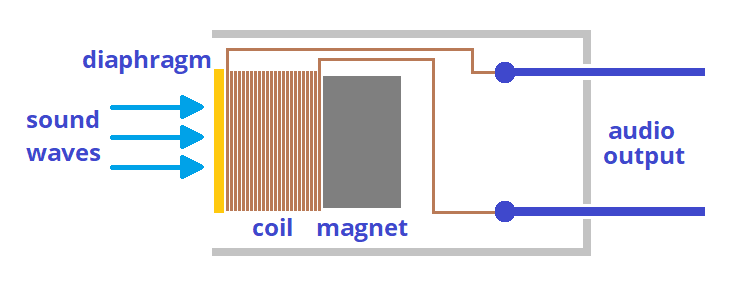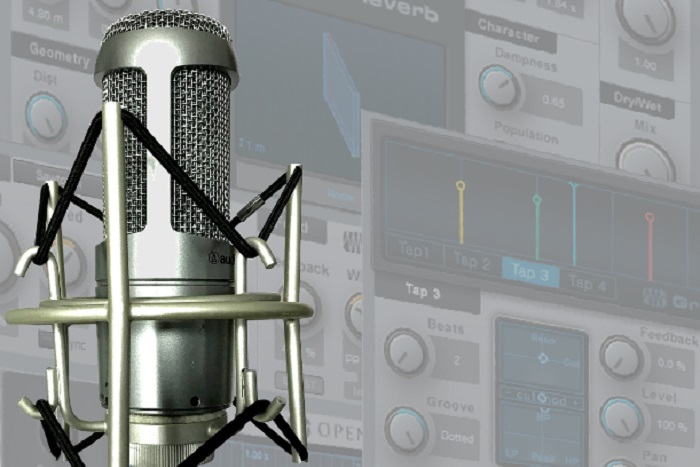Microphones are an essential part of recording, so you need to choose the right mic for the right job
The microphone has the crucial, and difficult, task of turning minute variations in air pressure into electrical signals. As such, it is the first link in the audio “chain,” and as the cliché goes, a chain is only as strong as its weakest link. Selecting the proper microphone for a specific task, and placing it properly to optimally pick up a signal, is a cross between an art and a science; this article presents some microphone basics so that you can match the right type of microphone to the right application. Of course, there’s not enough time or space here to give a truly exhaustive treatment. If you’re interested in more information, there are several books available on the subject.
THE FOUR BASIC MIC TYPES
There are four basic microphone types commonly used for recording: dynamic, condenser, ribbon, and PZM (the latter is a trademark of Crown International, Inc.). Each one operates differently, yet works on the same basic principle—air waves hit a sensitive, movable surface and this air motion is translated into electrical energy.
With a dynamic mic (Fig. 1), a coil of tightly-wound wire, free to move back and forth on a permanent magnet, attaches to a movable diaphragm which reacts to air pressure variations. The action of the coil moving through the permanent magnet’s field induces a voltage into the coil, with the output voltage being analogous to the air pressure variations hitting the diaphragm.

The condenser microphone (Fig. 2) takes advantage of the fact that capacitance changes will create voltage changes if the capacitor is biased (permanently connected to a constant voltage). In this case, the backplate has a permanent
charge and the flexible diaphragm acts as the other plate of the capacitor. Since capacitance is roughly a function of the distance between two plates, diaphragm motion leads to capacitance changes, thus producing a voltage output.

Ribbon microphones (Fig. 3) are not as common; they use a thin metal ribbon that moves in response to air waves and cuts across the magnetic field generated by a permanent magnet. While sometimes mechanically fragile, ribbon mics paradoxically resist high-temperature and high-humidity environments that can cripple electret and dynamic mics. Ribbon types also have superior transient response, but a second paradox is that they suffer from “ringing” (where the diaphragm continues moving slightly after being subject to a sharp transient). This translates into a slight additional resonance, which is theoretically undesirable but does give a subtly warm feel to acoustic instruments and voices. Traditionally, ribbon mics have a very low output, but newer generations of mics are becoming increasingly popular, as they’ve become far more rugged and offer a much higher output level.

The PZM microphone mounts a condenser mic in a special package where the mic points down at a plate, with a small gap separating the two. The reason for this packaging is to overcome the common microphone placement problem of phase cancellation. When you set up a mic on a podium, the same sound can hit the microphone at slightly different times—specifically, the direct sound hits before the reflected sound. This can lead to partial or total cancellation at certain frequencies, thus creating a thin sound. With a PZM mic mounted on the podium, the mic placement and use of a plate means that reflected waves occur at essentially the same time as the direct wave. However, quality sound is only one reason to use a PZM mic; another advantage is that the PZM is less intimidating to those with mic fright, since it’s a simple little plate rather than something sticking out into someone’s face.
DECISIONS, DECISIONS!
So how do you choose the right microphone for the right application? Based on the above, if I was recording a speech, the PZM might be a good option. But many situations are less clear-cut, and besides, microphones have improved to the point where a top-of-the-line anything sounds pretty good; proper tone shaping through equalization can also minimize differences between different types of microphones.
Although once upon a time different types of mics sounded quite different, recent advances have increased the versatility and usefulness of all types. Dynamic mics, for instance, used to have poor high-frequency response;
lighter diaphragms have solved that problem. Condenser mics were inconvenient to use since they required a separate power supply and lots of preamplification, but new condenser materials have resulted in a modern version of the condenser mic (the electret microphone), which uses low-voltage power supplies and low-noise solid state preamps. Ribbon mics were once known for two major characteristics: excellent response and extreme fragility. Now, ribbon microphones can stand up better to the kind of hostile treatment that recording equipment frequently receives. Since differences between microphones are becoming subtler, it becomes necessary to fine-tune your ear when deciding which type to use.
Based on my own experience, I’ve reached certain conclusions about which type of mic to use for which application. Dynamic mics are typically quite rugged, require no power supply, and are the mic of choice if you’re going to be giving it a lot of heavy-duty use (for example, a road show). One disadvantage of the dynamic is a lack of response at the extreme ends of the audio spectrum; a dynamic microphone with superb high-frequency response is expensive. Dynamics also have limited transient response (the ability to respond rapidly to a rapidly changing signal). This leads to a somewhat less crisp and precise sound. On the other hand, dynamic mics resist overload well, and are often used in the music business to handle bass drums and “screamer” vocalists.
Compared to dynamic models, condenser/electret mics offer superior high-frequency response and transient response characteristics. Many condensers additionally exhibit a peak in the high frequencies, giving a larger-than-life sound that is shimmering and crisp.
The condenser is not without its disadvantages, however. This type of microphone generates so little power by itself that it needs a high-gain preamp stage, which as you might expect adds a certain amount of noise and distortion. Additionally, the preamp needs power, so an electret microphone will usually have a battery that requires periodic replacement. Finally, the condenser/electret generally can’t take as strong a signal as a dynamic mic. Most of the engineers that I’ve worked with over the years have favored condenser mics for relatively quiet acoustic instruments (such as acoustic guitar), and vocalists who need “presence” more than they need “warmth.”
However, it’s important to remember that voices vary greatly, and if you have a variety of microphones available, it’s well worth trying out each one briefly and using the one which gives the best match to an individual’s voice. For example, I often use a condenser mic when recording my own singing because the extended high frequency response adds intelligibility and presence. However, when doing narration or commercials I may switch to a dynamic mic in order to give a deeper, more full-sounding vocal effect that fleshes out a soundtrack better. Of course, you can also make some of these changes via equalization, but equalization can only go so far without sounding gimmicky. It’s always better to choose the right mic and go for a little touch-up equalization, rather than use equalization as a crutch to compensate for improper mic selection.
The bottom line is simple: If you have a budget for three mics, don’t buy three good condensers, or three good dynamics, or three of any one type. Instead, buy a condenser, dynamic, and ribbon…and when you get a chance, rent a PZM someday to find out what it can do. And once you have your microphones, take care of them: avoid high heat, high humidity, moisture, rough handling, dropping, and public speakers who test a microphone by blowing into it. If necessary, add a wind screen to not only keep out moisture but also to prevent “P-popping” (where the loudspeakers thump horribly every time the person says the letter “P”).
MICROPHONE DIRECTIONALITY
Before closing out, we should also mention that different mics have different pickup patterns (Fig. 4). Some are omni-directional, meaning that they pick up sound from all directions, while others (mostly ribbon types) are bi-directional, which means that they pick up sound from the front and back but not from the sides. Cardioid or uni-directional mics have a heart-shaped pickup pattern, and tend to pick up sound only from the front. These pickup patterns are not precise by any means; for example, low frequencies are less directional than high frequencies, so even your omni-directional mic may be “omni” only for certain frequencies and more “uni” for other ones.

Directionality is most important for PA or sound reinforcement work, because in these cases you have to worry about picking up signals that could cause feedback. While recording, directionality is less important unless you are trying to mic several instruments or speakers at once in a single acoustic space and want to minimize leakage.
Microphones can sometimes be frustrating to work with, but at the moment they’re all we have to turn air motion into electricity. Practice with them, work with them, and listen carefully to the results — eventually, you’ll have no trouble matching the right microphone to the right job.
